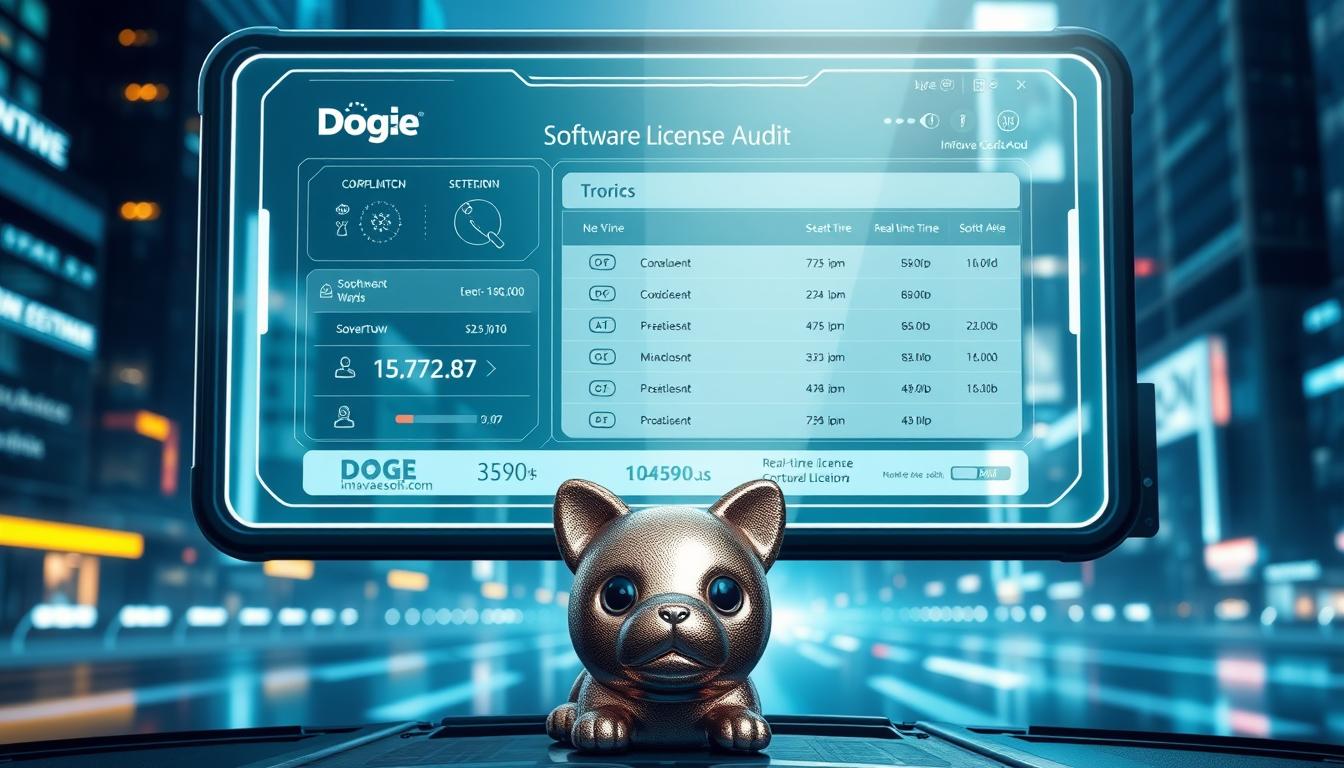
Inside Doge Software Licenses Audit HUD: Track, Monitor, Validate Instantly
In today’s digitally driven world, tracking and managing software licenses is no longer optional — it’s a critical aspect of compliance, security, and cost control. As businesses scale and adopt multiple software solutions, manually auditing licenses becomes impractical. Enter the Doge Software Licenses Audit HUD, a revolutionary toolset designed to track, monitor, and validate software licensing across entire organizations — instantly and accurately.
The increasing complexity of digital infrastructures means more organizations are searching for streamlined, automated, and intuitive ways to manage software license compliance. The Doge Software Licenses Audit HUD does just that — and much more.
In this comprehensive guide, we’ll break down what the Doge audit HUD is, how it works, its benefits, real-world use cases, and why it’s gaining traction among IT leaders, compliance managers, and cybersecurity professionals worldwide.
What Is Doge Software Licenses Audit HUD?
The Doge Software Licenses Audit HUD (Heads-Up Display) is an intelligent software dashboard designed to provide real-time visibility into software licensing data. It works by aggregating and analyzing license-related information from multiple software systems, SaaS applications, and internal deployments to ensure that companies are fully compliant with licensing terms and not overspending on unused resources.
The term “HUD” refers to its sleek, interactive interface, offering immediate, real-time updates similar to what you’d find in advanced gaming or aviation displays. But here, it’s applied to business-critical information, such as:
- Number of valid licenses
- Expiry and renewal timelines
- Unauthorized installations
- Usage anomalies
- License mismatches
At its core, the Doge Software Licenses Audit HUD simplifies compliance, helps reduce legal risk, and improves IT resource efficiency.
Why Software License Auditing Matters More Than Ever
Ignoring license audits can lead to serious consequences. From massive legal fines to unnecessary IT costs and cybersecurity vulnerabilities, the risks are real. Many companies continue to rely on spreadsheets or outdated internal tools to track licenses, which are prone to human error and data mismatches.
Software audits by vendors like Microsoft, Adobe, or Autodesk can happen at any time. Without a clear audit trail or accurate usage reporting, businesses can quickly find themselves in hot water. That’s where automated HUD systems like Doge become invaluable.
They not only detect violations or gaps before vendors do, but also allow businesses to take proactive control of their software ecosystem.
Key Features of Doge Software Licenses Audit HUD
Let’s take a closer look at the features that make this tool a standout solution in the software audit landscape:
1. Real-Time License Tracking
With the Doge HUD, license usage data is updated in real-time. This means IT administrators can immediately detect when new software is installed or removed, helping them respond faster to potential licensing conflicts.
2. Centralized Dashboard
The Doge interface consolidates license data across all vendors and platforms into a single, clean dashboard. No more jumping between portals or spreadsheets to find what you need.
3. Automated Compliance Alerts
The system actively scans for non-compliant software installations and flags them with instant alerts. This reduces audit risk and keeps your organization legally protected.
4. Custom License Reports
Create customizable reports for internal audits, procurement teams, or external software vendors. Export data in multiple formats (PDF, CSV, JSON) and tailor reports by department, region, or software vendor.
5. License Optimization Insights
Beyond just compliance, Doge also provides cost optimization insights. It shows which licenses are underutilized, helping you cut unnecessary expenses by downgrading or reallocating licenses.
How Doge HUD Improves Software License Management
Implementing the Doge Software Licenses Audit HUD has far-reaching benefits across multiple departments. Here’s how it transforms operations:
A. IT Departments Get Control
No more chasing down rogue installations. IT managers get full visibility and control over which software is running across every device in the company, whether desktop or cloud.
B. Finance Teams Save Money
With real-time license usage insights, finance teams can stop paying for unused software. Doge shows exactly what’s being used and what’s wasting budget.
C. Legal Teams Reduce Risk
By maintaining proper licensing documentation and audit trails, legal departments reduce exposure to lawsuits and vendor fines.
D. HR Teams Handle Licensing During Offboarding
When employees leave, their licenses can be instantly revoked or reallocated — all managed from a single interface.
Real-World Applications of Doge Audit HUD
Let’s explore a few scenarios where organizations benefit directly from implementing the Doge Software Licenses Audit HUD:
1. Tech Startups Scaling Rapidly
Startups often onboard new tools without clear license management. Doge helps track every license, ensuring startups avoid unnecessary costs or compliance violations as they grow.
2. Enterprise IT Departments with Multiple Vendors
For large companies juggling 50+ software vendors, Doge centralizes everything into a manageable dashboard. Audit-ready reporting becomes a few clicks away.
3. Government Agencies Needing Strict Compliance
Public sector organizations face tight regulations. Doge’s audit trails and automated alerts ensure they remain compliant with licensing laws and government standards.
4. SaaS Companies Managing Client Licenses
Firms offering SaaS or software-as-a-service solutions can use Doge to monitor client-side license usage, helping prevent over-usage and license abuse.
How to Implement Doge Software Licenses Audit HUD
Getting started with Doge is relatively straightforward, and implementation can typically be completed in under a week:
- System Integration:
- Connect Doge to your existing IT infrastructure, software platforms, and cloud accounts.
- Data Import:
- Import current license data, usage logs, and user records.
- Configure Alerts and Permissions:
- Set roles for admins, define alert thresholds, and customize compliance rules.
- Audit Preparation:
- Generate real-time compliance reports for internal or vendor audits.
- Ongoing Optimization:
- Regularly monitor the dashboard to manage license changes, optimize costs, and track software behavior.
Conclusion
The modern business landscape demands real-time visibility and precision in managing software assets. The Doge Software Licenses Audit HUD offers a powerful combination of monitoring, reporting, and compliance tools — all wrapped into one intuitive platform. Whether you’re a growing startup or a global enterprise, Doge makes it easy to stay compliant, reduce software costs, and prepare confidently for any audit.
With an increasing need for automated license management and compliance transparency, Doge HUD is not just a helpful tool — it’s a competitive advantage.
FAQs
1. What does Doge Software Licenses’ Audit HUD do?
It tracks and monitors real-time software license usage across your organization.
2. Is the Doge HUD compatible with cloud-based tools?
Yes, it integrates with both desktop and SaaS platforms seamlessly.
3. Can Doge HUD prevent software compliance issues?
Absolutely — it sends real-time alerts before issues become legal problems.
4. How fast can I implement Doge audit tools?
Most businesses integrate Doge HUD within 5–7 business days.
5. Does Doge offer license usage reports for audits?
Yes, you can generate customizable reports ready for internal or vendor audits.



